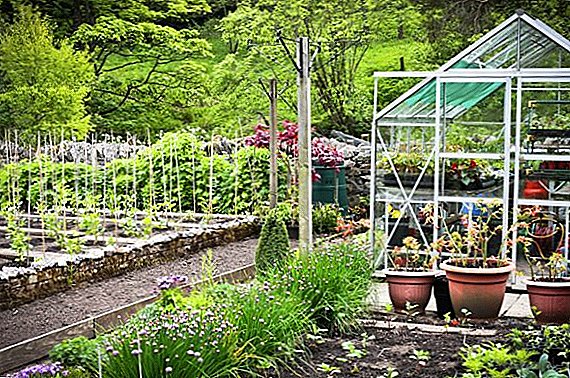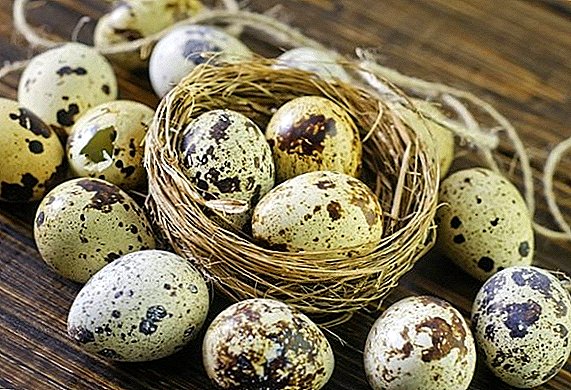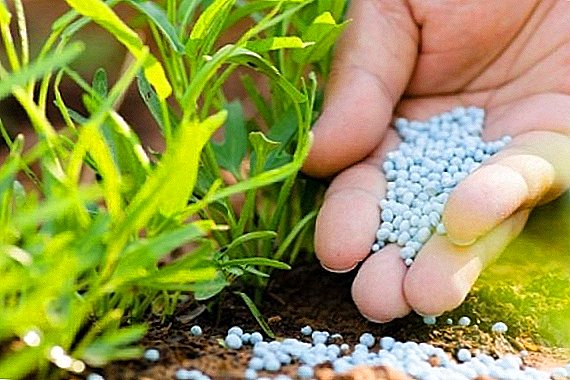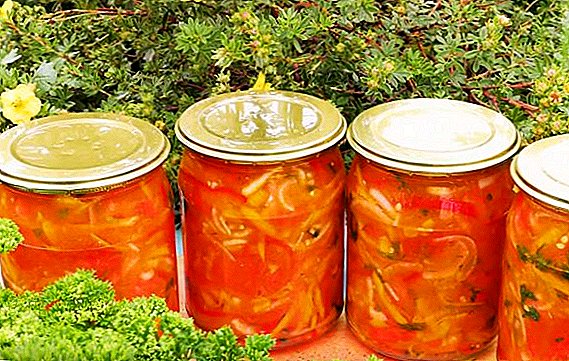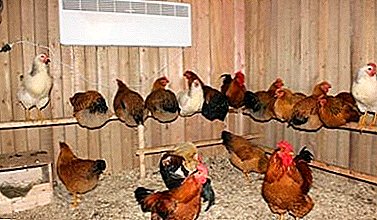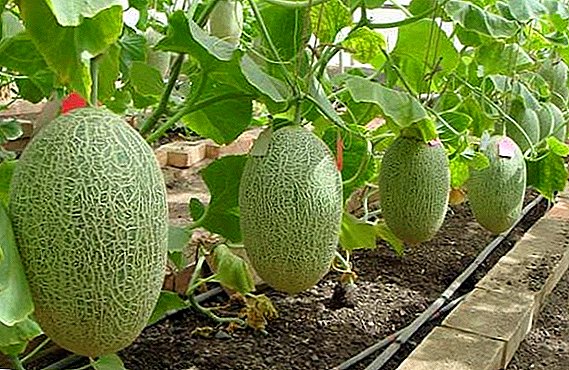 Capricious melons are successfully grown in countries with warm climates. Those gardeners who live in the climatic conditions of the middle lane have to build greenhouses and greenhouses to harvest melons, watermelons, pumpkins. Despite the apparent complexity, it is sometimes easier to grow melon crops in greenhouses than in open ground. Greenhouses made of polycarbonate are especially convenient to use. This article will discuss the features of growing melons in these modern greenhouses, the basic rules for preparing a greenhouse for planting melons and the principles of crop storage.
Capricious melons are successfully grown in countries with warm climates. Those gardeners who live in the climatic conditions of the middle lane have to build greenhouses and greenhouses to harvest melons, watermelons, pumpkins. Despite the apparent complexity, it is sometimes easier to grow melon crops in greenhouses than in open ground. Greenhouses made of polycarbonate are especially convenient to use. This article will discuss the features of growing melons in these modern greenhouses, the basic rules for preparing a greenhouse for planting melons and the principles of crop storage.
Growing varieties
Since melon is a culture sensitive to climate change and ripens for a long time, early early ripening varieties are used for growing indoors. They can be planted in April and get the harvest in late July.

Most popular varieties: "Dessert", "Gift of the North", "Roksolana", "Russian Garden", "Siberian", "Goldie", "Titovka". At the end of ripening, these fruits will be small but sweet and ripe.
Important! Melon has a strong root system that goes deep into the soil. Surface watering will lead to waterlogging of the soil and the decay of sprouts. To prevent this, water it at the root; watering spend abundant, but rare.
Training
To improve the germination of seed and strengthen seedlings, it is necessary to carry out preparatory procedures. For all varieties of this crop they will be the same.
Seed
Pay attention to zoned varieties, they are better suited than others to the conditions of your climate. Buy seeds in gardening stores, in any case, do not take the material with it.

Pay attention to the period of formation of fruits from the ovaries. If it exceeds two months, you will be left without a crop. Do not believe the tales of large fruits, a great harvest can be obtained only in the natural range of this culture. Your goal - medium-sized ripe berries. Buy material with a long shelf life. The fresher the seeds, the higher their germination.
Learn more about the intricacies of growing melons in the area, the benefits of melons, the rules of harvesting for the winter and how to deal with diseases and pests of melons.
Seedlings
For strong healthy seedlings, select the best seeds. They are quite large and have a lot of weight. To determine the quality for sure, prepare a solution of one teaspoon of salt and a glass of water. Fill them with seeds and mix everything well. Bad seeds will pop up, and the good ones will remain on the bottom. Drain bad material, rinse well under running water and dry on paper towel.

Sowing on seedlings begin in the tenth of April. Before sending the seeds to the ground, treat them for fungal diseases. Spread them in one layer on a large dish or plate and cover with half a hour with a weak warm solution of potassium permanganate. Drain the solution and cover the seeds for another 10-15 minutes with a solution of an immunomodulator or growth stimulator. The most commonly used drugs called "Appin" or "Kornevin." This procedure will increase the germination of planting material and accelerate the development of seedlings.
Did you know? For the first time, ancient Egyptians began to grow melons as an agricultural crop. In many excavations on the territory of modern Egypt, melon seeds were found, the approximate age of which is estimated at five to six thousand years.
Prepare a soil mixture at the rate of 1 part of the earth to 3 parts of humus. Ten liters of the mixture, add a glass of ash and 5-6 g of potassium sulfate. Prepare peat cups. They can be transferred to the ground greenhouses with seedlings, without risking damage to the fragile root system. Lay the seeds in the soil to a depth of 3 cm. Do not tamp the soil. If you put a seed on the edge, it will be easier for the seedling to break through to the ground surface.

Spread the pots a short distance apart and cover them with a transparent film. The temperature in the room should be kept within 23-25 ° C, and the length of daylight should be at least 12 hours. Use fluorescent lamps to illuminate the seedlings, otherwise it will stretch and become pale. Every day, raise the film and air sprouts. Moisten the soil as needed, normally every two days. On the 4-5 day after sowing the shoots will sprout. Do not overfill them, so that the root neck does not rot.
Read more about such varieties of melons as: "Muskusnaya", "Kolkhoznitsa", "Torpeda"
On day 12 of growth, apply complex fertilizer to the soil. Spend the same procedure a week before transfer to the greenhouse.
If two sprouts appear in the pot, pinch the weaker near the ground. So you save the root system of the second germ. As soon as the third leaf appears on the main shoot, remove the growth point on it. This will be an incentive for the release of lateral shoots, which subsequently appear fruitful flowers.

The whole process of growing seedlings should take about a month. In the greenhouse soil transported seedlings in mid-May, so you will certainly avoid recurring frosts.
Important! Seedlings should receive a sufficient amount of light and heat. Keeping them in conditions of short daylight hours will lead to discoloration of the leaves and weak sprouts. Poorly germinated shoots will not be able to hold onto heavy fruits.
Greenhouse preparation
The preparation process begins in early March. If the snow is no longer foreseen, remove it from the walls and doors. Wash the polycarbonate with soap and soft sponges so that the sediment does not impede the penetration of sunlight. Inspect the walls and ceiling for cracks. Even in a small crack cold air will leak, destructive for young shoots. Close cracks with sealant and renew seams.

Install high trellis for wattle. Lanes is a grid of large squares, and it must be strong. The trellis at the end of the season will have the weight not only of the stems, but also of the fruits. The height of the trellis and, accordingly, the greenhouse must be at least two meters, otherwise the melon will not be able to develop normally.
Did you know? Despite the fact that the most delicious melons are considered Abkhazian, China is the world's largest exporter of these fruits. In 2017, the share of Chinese melons among world exports accounted for 25%.
After installing the trellis, clean the walls of the greenhouse and the ground with disinfectant solutions. Disinfection will protect plants from fungal diseases in conditions of high temperature. For walls greenhouses fit: boiling water, copper sulfate solution, bleach. If you did not bother to work the soil in the fall, then it is impossible to saturate it with chemical solutions in the spring. Limit yourself to boiling water and remove the top layer of earth (3-4 cm). Distribute nitrogen fertilizer evenly. Melons like loose sandy soil, so add 3-4 kg of fresh soil per square meter over fertilizer.

Growing up
There is a set of activities for growing melons in the greenhouse, which mainly comes down to watering and ventilation.
If you have just decided to acquire a polycarbonate greenhouse, it will be useful for you to study all the design features of these greenhouses; find out what kind of foundation is suitable for this greenhouse, how to choose polycarbonate for your greenhouse, and also how to make a greenhouse from a polycarbonate with your own hands, how to properly handle the greenhouse.
Priming
First of all, the soil should be heated to a minimum of 25 ° C. Buy a special thermometer and determine the temperature by it. If the soil is not warm, seal the greenhouse for 3-4 sunny days.

The best landing pattern is 50x70 cm. They will give plenty of room for stalk growth. Form pits for planting according to this scheme, place at the bottom of each half cup of compost and pour it with hot water. Transfer to the pits seedlings in the peat cups. Do not try to sprinkle them with earth, it will lead to the decay of the radical neck.
Leave the cups 1 cm or 1.5 cm above the soil level.
You will also be interested to get acquainted with such representatives of melons as zucchini, pepino, squash, pumpkin, watermelon, cucumbers.
Top dressing
Every two weeks, conduct additional feeding using natural fertilizers. In turn, make infusions of ash, humus and chicken or quail litter.

Watering
The leaves of this crop do not tolerate moisture ingress, so water the seedlings at the root or make shallow furrows along the entire planting for watering. This crop tolerates drought better than excess moisture. Water it only when the leaves begin to fade slightly.
Important! Feed melon sprouts regularly, but stop fertilizing as soon as the fruits begin to ripen. Further fertilizing will lead to the accumulation of chemicals in the fruit and their food unsuitability.
Fertilizers
Nitrogen fertilizers in the form of a solution start to make on the 11th day after planting and repeat watering every 10-11 days. For every 10 liters of water, add 20 g of saltpeter. Under each seedling pour 2 liters of solution.

Potassium nitrate is another essential greenhouse melon fertilizer. Calculate its volume, based on the area of the greenhouse and the number of seedlings.
In the greenhouse, you can also grow tomatoes, radishes, cucumbers, bell peppers, eggplants, and strawberries.
Pollination
There are two ways - natural and artificial. If you open doors and windows, bees and butterflies pollinate your melon. If there are few insects, and the flowering period passes, do the pollination yourself. Tear off several male flowers (they are the largest), gently clean them of petals, and with anthers touch the stamens of uterine flowers. To carry out this procedure should be in the morning. Hurry up, because the period of flowering of male flowers is extremely small - from 3 to 5 hours.

Formation
- To form strong stems and a strong root system, arrest the growing point after the fifth leaf appears on the main stem.
- After 10-12 days, new shoots will appear at the root collar. Immediately remove the weak, strong again pinch the tip.
- Do the same with the ovaries.
- One shrub can simultaneously feed no more than 5 fruits. Examine the whips when the fruit is the size of an egg and pluck any weak or unevenly growing berries.
- On the tenth day after planting, the stems will reach sufficient length for tying. Fasten them with trellis on the trellis so that they twist upwards and not spread in a covering way on the soil.
Did you know? Taste is expensive to pay. Japanese melons, grown exclusively in a small town near Sapporo, are sold in pairs and at auction. The cost of two such fruits at the auction comes to twenty thousand dollars. People who have tasted this incredible delicacy celebrate the sweetest, sweetest flesh and wondrous aroma. This variety is called Yubari King.
Ventilation
The temperature in the greenhouse should be kept between 28-30 ° C. If the summer is warm, air the room regularly. Open the door and windows, temporarily stop watering. Airing is advisable to carry out in the early morning after sunrise, and in the late evening, when the air begins to cool.

Diseases and pests
Most often, this culture shows fungal infections and aphids.
- Mealy dew and its false subspecies. Developed on sheets of yellow and yellow-green spots. True dew appears on the upper side of the leaf, false - on the bottom. Leaves and stems begin to shrivel and curl, a whitish plaque appears on them. To get rid of this disease, it is necessary to spray plants every two weeks with a solution (0.1 kg per 10 l) of colloidal sulfur. Also, many gardeners use a drug called "Topaz".
- Fusarium. Manifested by gray dry spots on the leaves. It is quickly transferred from the bush to the bush, therefore, the affected plants should be immediately removed from the soil and burned. Moderate watering and presowing seed treatment with potassium permanganate will save from occurrence.
- Medyanka. It affects the foliage and fruits. After infection, yellow-orange spots appear that turn into through holes in the leaves and deep holes in the fruit. From this disease, plants can be eliminated by spraying a solution of copper sulphate in lime milk.
- Aphid. Large groups accumulate on the leaves and flowers, drinks juice and provokes drying up of the plant, destroys the whole color. Get rid of aphids by spraying a solution of soap (0.1 kg per 10 liters).
- Wireworm. It attacks not only potatoes, but also melons. Gnaws the rind of the fruit and eats away the seeds. You can prevent the appearance of this pest. Regularly pull weeds out of the greenhouse and sprinkle only clean, packaged soil.





Important! Keep the melons so that they do not touch each other, as they begin to rot in the places of contact between the skins. A reliable way to store is to hang the fruit in separate nets.
Harvesting and storage
Remove only ripe fruit from the stems. The ripeness can be determined by the drying tail, on which the berry holds, the delicate sweet aroma and the light yellow rings diverging from the tail. Ripened fruit cut from the shoots shears, trying not to catch the skin. Immediately put them in separate cardboard boxes with the stem down and cover the top with parchment.

Store melons in a dry dark room at a temperature of 16-18 ° C. Reach out periodically and inspect for mold and rot. In such conditions, the berries will be stored for 5-7 months.
Before you start planting seeds to obtain seedlings, select the melon variety that is suitable for your climate. Thoroughly treat the seeds to prevent infection by pests and fungi of young shoots. Prepare a greenhouse for planting in advance, warm the soil and fertilize it so that the seedlings are comfortable. Be sure to install the trellis so that the sprouts find support, and feed the plants to form full fruits. Wait until the melons are fully ripe and carefully store them in storage. Then a rich harvest will delight you even in the cold season.





